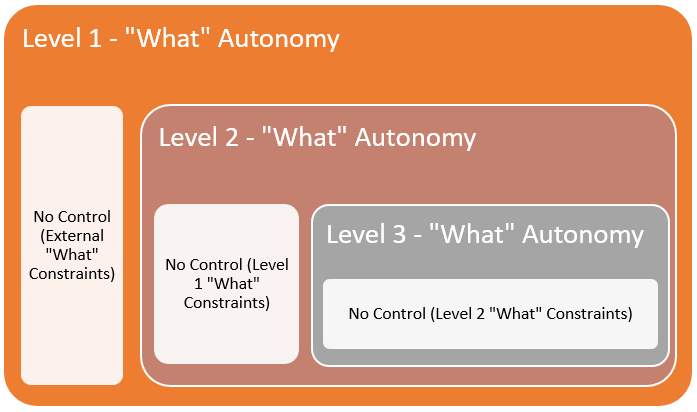The "What" and the "How" of Autonomy at Work
Time To Read: ~2 min.
The concept of autonomy at work is pervasive throughout business literature on organisational culture, and most everyone has an intuitive understanding of the need for personal freedom to choose how you do your work, and how that relates to employee engagement.
What do we mean, however, when we talk about autonomy in the workplace? I think misunderstandings stem from conflating choice around how with choice around what and, to prevent these misunderstandings from alienating leaders from their staff1, a shared understanding of what we mean when we talk about autonomy is essential.
Limiting individual autonomy at work is a necessity. To reap the rewards of collaboration in organisations, we must sacrifice some personal license as we consider and accommodate the needs of others2. Nobody has perfect freedom; everyone is accountable to someone (reporting lines) or something (consumer demand). Within organisations, the scope of responsibility of a role is the limiting factor for "what" autonomy or, to put it another way, as the scope of a person's responsibility within an organisation increases or decreases, so too does the surface area of their influence over what gets done.
Diagram: The amount of "what" autonomy at different levels of responsibility within an organisation.
In contrast, "how" autonomy refers to freedom within a role, and this is what is generally referred to when discussing personal autonomy at work; how you do your job should be up to you and should not be dependent on the overall level of responsibility for your role within your organisation.
There are legitimate concerns around where the limits on personal autonomy in the workplace are, and should be. An "anything goes" approach will certainly result in chaos. The solution is to constrain total personal autonomy in the workplace via the "what". As soon as you start interfering with the "how", you're in the realm of micromanagement and disengagement. Be very clear on boundaries and expectations. That is where you mitigate your risks. Define the "what", support your people, and then let them get on with doing what you hired them for.
Until next time.
Psssst! If a friend sent you this newsletter or you found it through social media, consider subscribing and sharing it with your friends and family (you can unsubscribe any time)! You can also find me on Twitter @frontleftwill.
Ignoring corrupt hierarchies for the sake of this conversation


